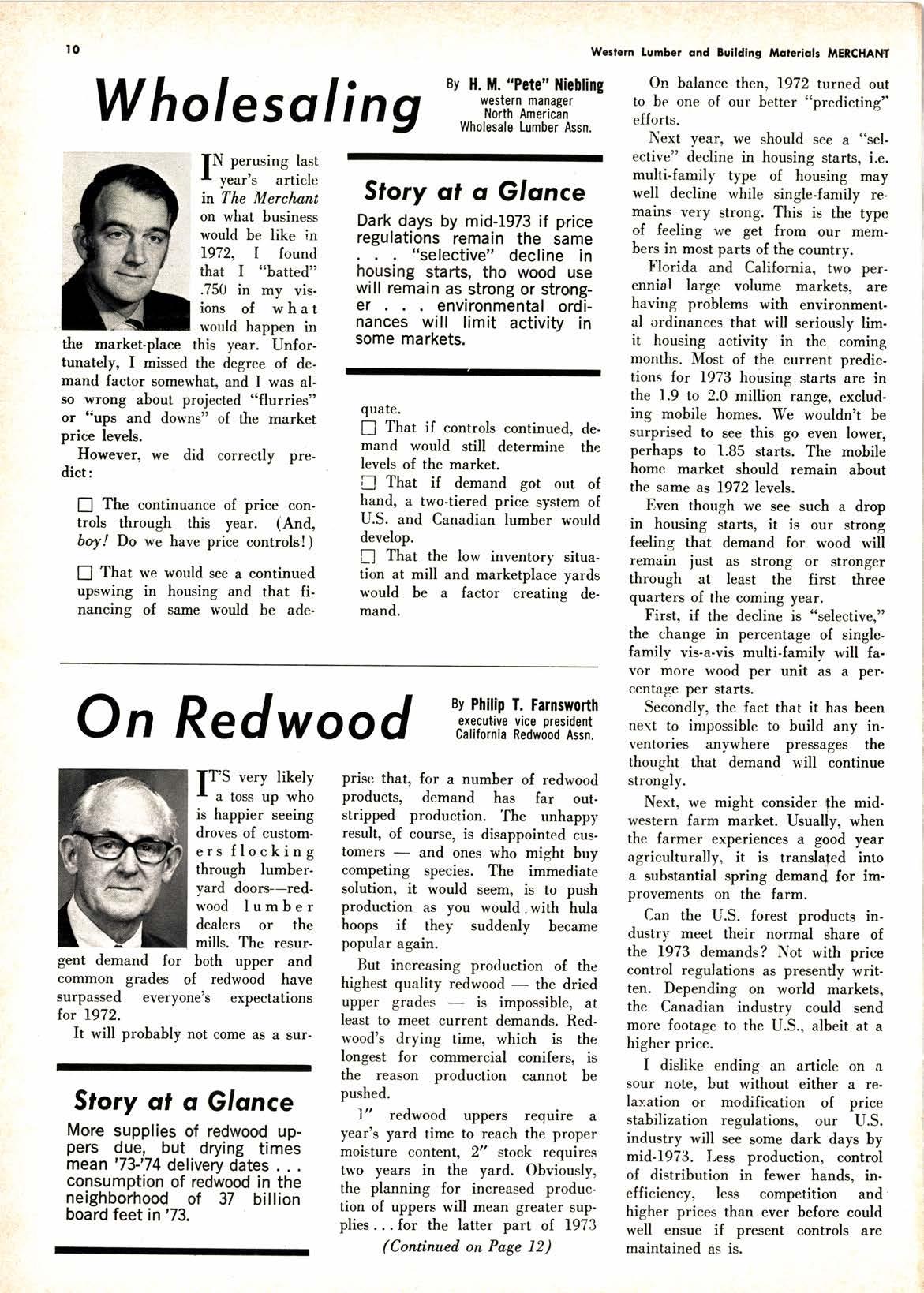
2 minute read
On Re dwood '}t+ii*liriT,'"ffi
JT'S very likely r a toss up who is happier seeing droves of custom. ers {locking through lumberyard doors--redwood lumber dealers or the mills. The resur. gent demand for both upper and common grades of redwood have surpassed everyone's expectations for 1972.
It will probably not come as a sur-
Story sI q Glonce
More supplies of redwood uppers due, but drying times mean '7$'74 delivery dates . consumption of redwd in the neighborhood of 37 billion board feet in'73.
prisc that, for a number of redwood products, demand has far out. stripped production. the unhappy result, of coursg is disappointed customersand ones who might buy competing species. The immediate solution, it would seem, is tr-r push production as you would with hula hoops if they suddenly became popular again.
But increasing production of the highest quality redwoodthe dried upper gradesis impossible, at least to meet current demands. Redwood's drying time, which is the longest for commercial conifers, is the reason production cannot be pushed.
i" redwood uppers require a year's yard time to reach the proper moisture content, 2" stock requires two years in the yard. Obviously, the planning for increased production of uppers will mean greater supplies... for the latter part of 1973
(Continued, on Page 12)
On balance then, 1972 turned out to be one of oul better "predicting" efforts. f)ESPITE prosu p""t" for a generally buoyant domestic econ. omy next y@r, individual businessmen and investors mapping their strategies for 1973 should base their plans sumptions: on certain key as- fl Not all elements of the economy rvill be advancing at the same Pace.
N*ext year, we should see a t'selective" decline in housing starts, i.e. multi-family type of housing may well decline while single-family re. mains very strong. This is the type of feeling we get from our members in most parts of the country.
Florida and California, two perennial large volume markets, are having problems with environment. al ordinances that will seriously lim. it housing activity in the coming months. Nlost of the current predic. tions for 1973 housing starts are in the 1.9 to 2.0 million range, excluding mobile homes. We wouldn't be surprised to see this go even lower, perhaps to 1.85 starts. The mobile home market should remain about the same as 1972 levels.
Even though we see such a drop in housing starts, it is our strong feeling that demand for wood will remain just as strong or stronger throrrgh at least the first three quarters of the coming year.
First, if the decline is "selective," the change in percentage of singlefamily vis-a-vis multi-family will fa. vor more wood per unit as a per. centage per starts.
Secondly, the fact that it has been next to impossible to build any in. ventories anvwhere pressages the thought that demand will continue strongly.
Next, we might consider {he midwestern farm market. Usuallyo when the farmer experiences a good year agriculturally, it is translafed into a substantial spring demand for improvements on the farm.
Can the U.S. forest products industry meet their normal share of the 1973 demands? Not with price control regulations as presentlv written. Depending on world markets, the Canadian industry could send more footage to the U.S., albeit at a higher price.
I dislike ending an article on a sour note. but without either a re. laxation or modification of price stabilization regulations, our tl.S. industry will see some dark days by mid-1973. Less production, control of distribution in fewer hands, in. efficiency, less competition and higher prices than ever before could well ensue if present controls are maintained as is.
I Wage and price restraints will cuntinue, in one form or another, beyond the planned April, 1973, expiration date.
I Monetary policies, particularly as they affect short-term interest rates, are likely to become somewhat more restrictive.
Businessmen and investors cannot find their ease in forecasts of a I.265+rillion-dollar economy next year, however accurate that forecast may turn out to be. Only very spe-










